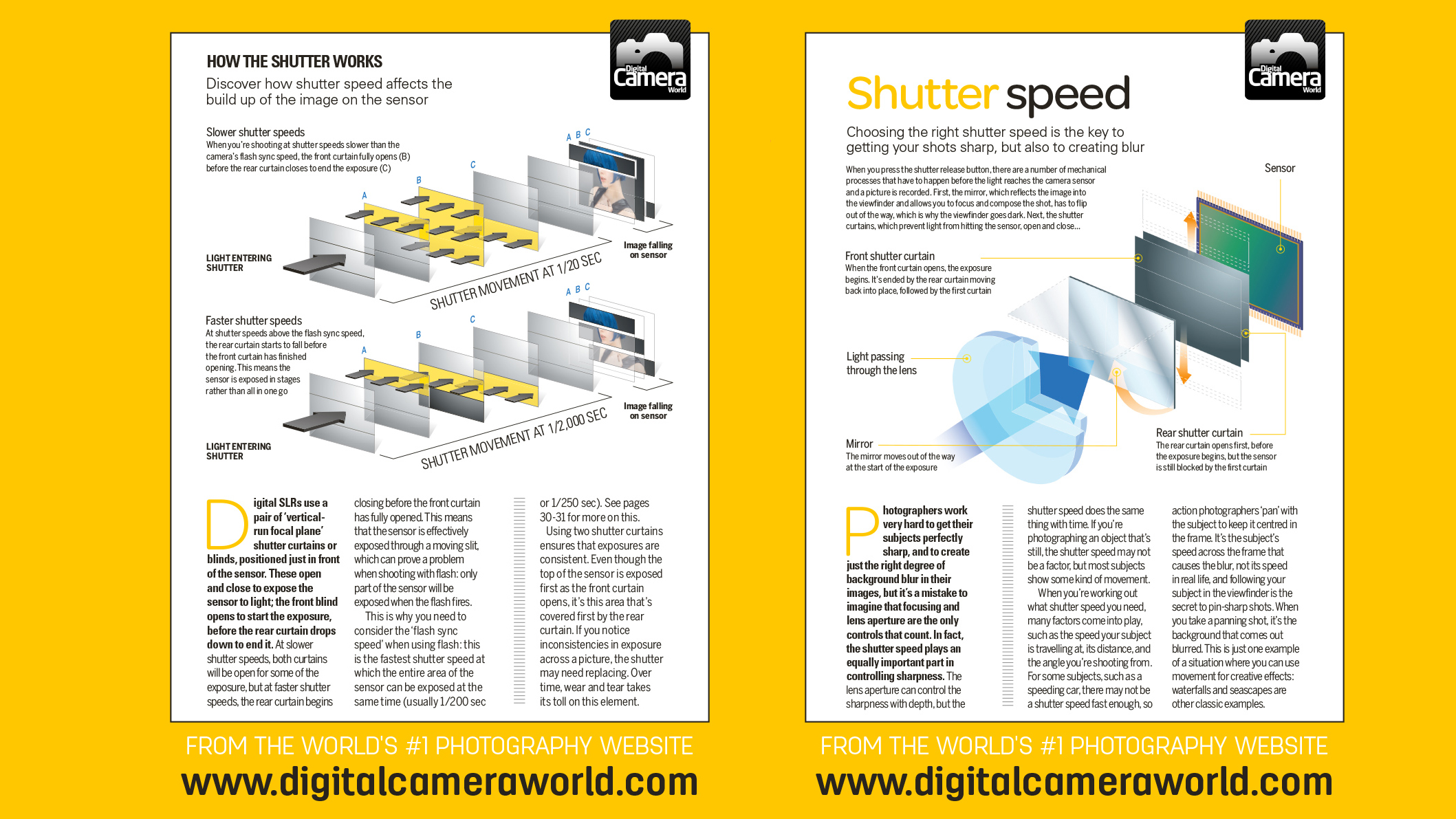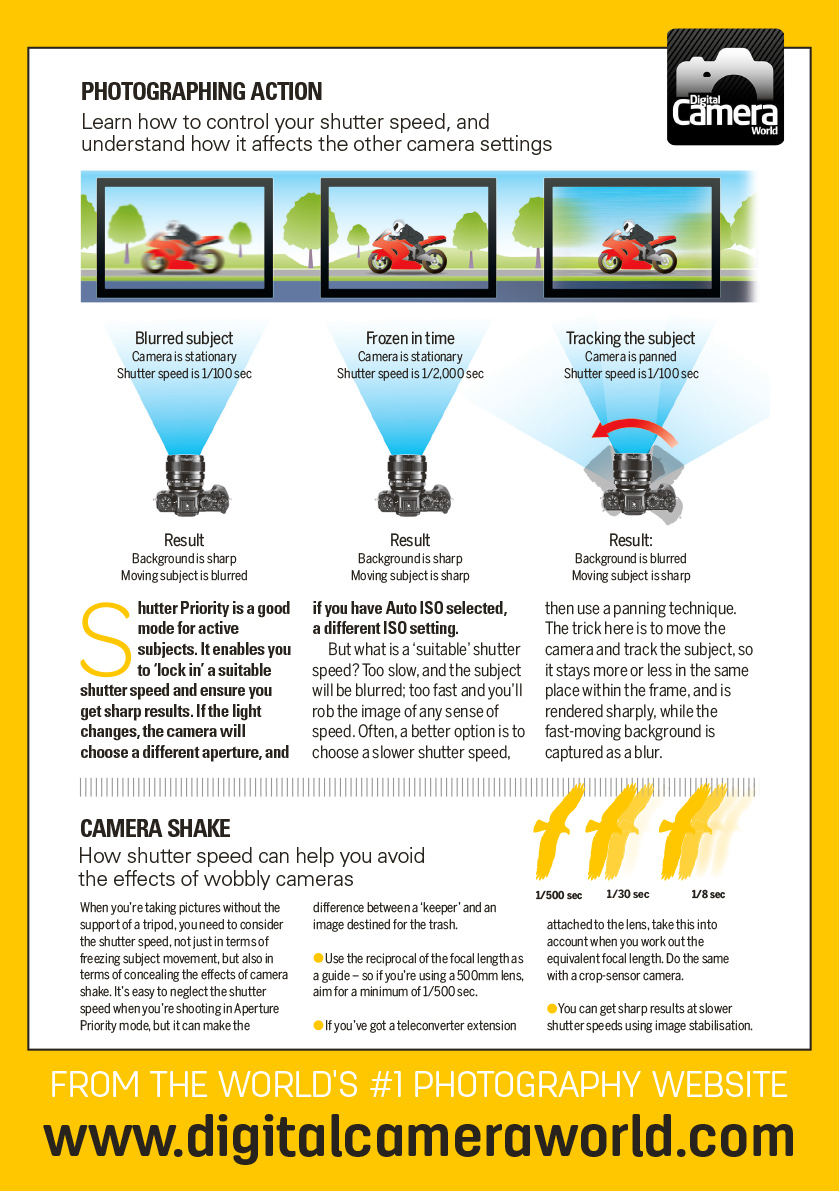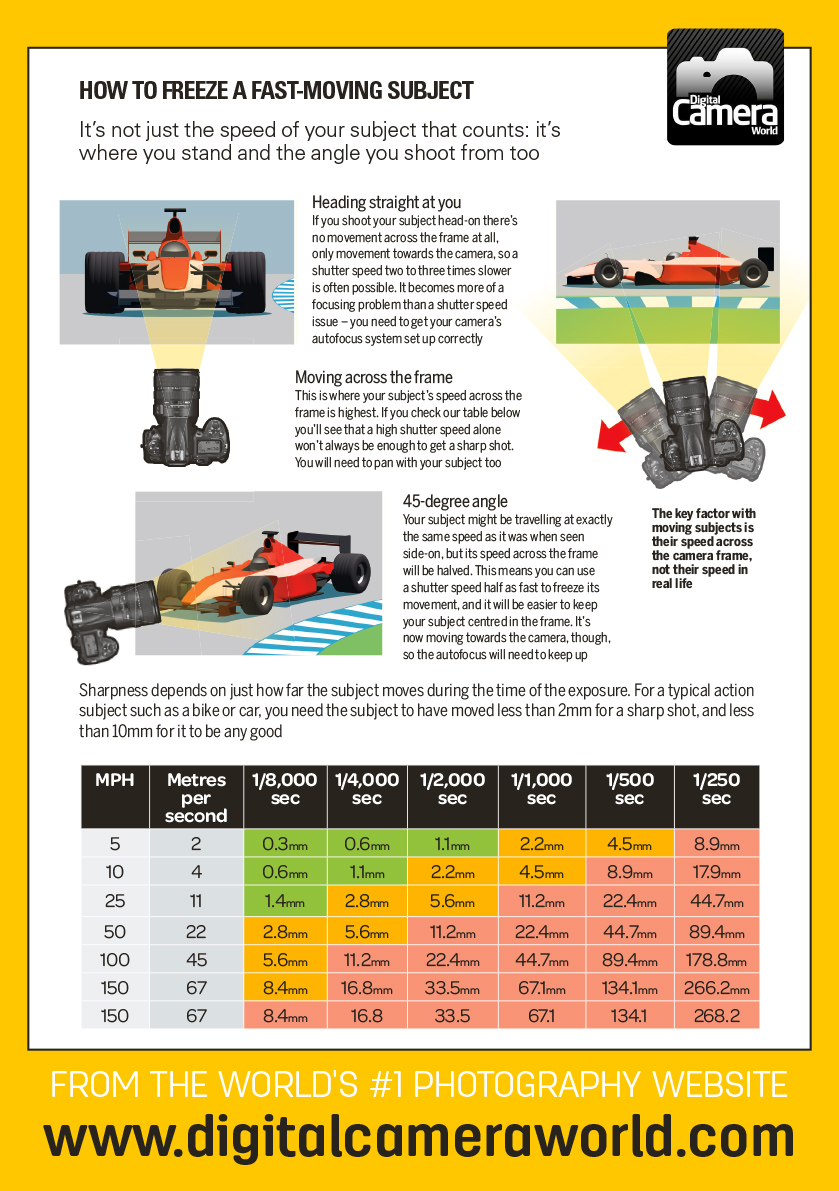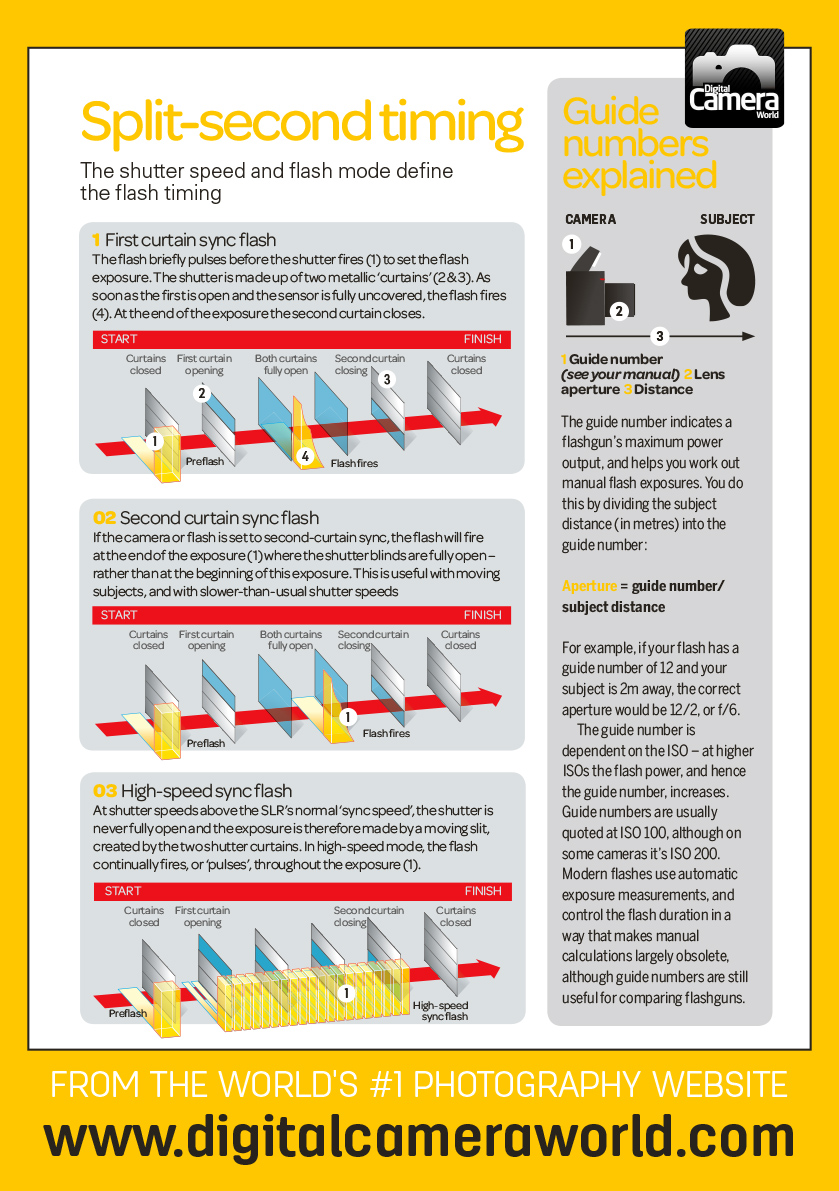Photography cheat sheet: What is shutter speed?
Shutter speed is the length of time that your shutter is open for so that light can hit the camera sensor. The diagram below shows you how the shutter works

Shutter speed is one of the three fundamental pillars of the exposure triangle, (the other two being Aperture and ISO). Shutter speed means exactly what you think it would – the speed that the shutter on your camera is open for.
Even if you're only a beginner in photography, you'll likely know that a fast shutter speed means a shorter exposure (and less light hitting the sensor) while a longer exposure means that the shutter is open for more time, which allows more light to hit the sensor. By changing your shutter speed, you can adapt your exposure for the light levels in your environment, but you can also make creative choices.
The best professional cameras today are capable of capturing blisteringly fast shutter speeds, and these can be used freeze the motion of subjects such as vehicles, athletes and even wildlife. Conversely, many photographers enjoy using a very slow shutter long exposure to capture blurred motion in a scene – waves in a landscape, for example.
See also: What is exposure?
But how exactly does the shutter work and how do you know what is the best shutter speed to use – particularly when it comes to capturing fast-moving subjects?
Good question! Check out our cheat sheets below which explain how shutter speed works, and how you can change it to capture action!
When you fire the shutter on your camera, a number of things happen. Firstly, on a DSLR, the mirror that reflects the viewfinder onto the sensor has to move out of the way (of course this doesn't happen on mirrorless cameras).
The best camera deals, reviews, product advice, and unmissable photography news, direct to your inbox!
Next, the shutter curtains open and close in front of the sensor. The front curtain opens to begin the exposure, which ends as the rear curtain closes.
How to control your shutter speed

The shutter speed you need to freeze a fast-moving subject
When you're working out which shutter speed to use, there's no one-size-fits-all answer unfortunately. If your aim with the image was to capture your subject pin-sharp, you'd need to consider the speed at which your subject is travelling at, plus its distance and the angle that you're shooting from. Check out the cheat sheet below.

What has flash mode got to do with shutter speed?

Read more:
Photography tips for beginners: 12 things to learn with your camera
Cheat sheet: How to understand ISO settings
Cheat sheet: How to understand f-stops
Cheat sheet: Shutter speed stops

Lauren is a writer, reviewer, and photographer with ten years of experience in the camera industry. She's the former Managing Editor of Digital Camera World, and previously served as Editor of Digital Photographer magazine, Technique editor for PhotoPlus: The Canon Magazine, and Deputy Editor of our sister publication, Digital Camera Magazine. An experienced journalist and freelance photographer, Lauren also has bylines at Tech Radar, Space.com, Canon Europe, PCGamesN, T3, Stuff, and British Airways' in-flight magazine. When she's not testing gear for DCW, she's probably in the kitchen testing yet another new curry recipe or walking in the Cotswolds with her Flat-coated Retriever.

